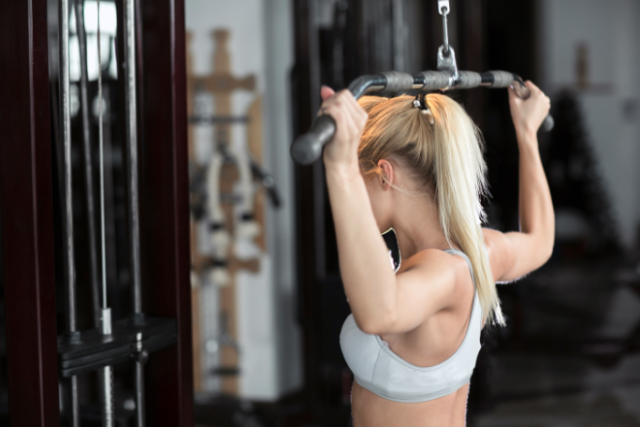7 Dangerous Exercises

Sometimes strength training can not only not bring results, but also harm health. To avoid negative consequences, it is best to turn to the services of a personal trainer, but if this is not possible and you still train on your own or under the guidance of more experienced friends, then try to avoid common misconceptions and do not perform these popular, but dangerous exercises for your body, which we wrote about in this collection.
Stretching for “warming up”
Passive stretching of untrained muscles and tendons can lead to severe stretching and even tearing, so do not use it as a warm-up exercise. The most suitable time for stretching is a small hitch after cardio training, otherwise it is better to set aside a separate lesson for stretching. Stretching after strength training is not relevant.
Alternative: Dynamic stretching (amplitude and swing movements) or joint warm-up, vigorous walking or elliptical exercises before training will increase blood circulation, disperse oxygenated blood to the muscles and safely prepare them for exercise.
The pull of the upper block behind the head
When performing such an exercise on a block simulator, the handrail should always be in front of you. Otherwise, a shoulder injury awaits you! Pulling the block behind the head creates too much tension in the shoulder joint.
Alternative: pull the block to the chest.
Leg extension in the simulator
Think about how often in everyday life you have to lift weights in this way? Never? That’s the point. Firstly, this exercise does not provide any functional benefit, that is, it does not give you useful skills for daily activities. Secondly, your knees are not designed to lift weight at this angle, so this training is injury-prone.
The alternative: squats, deadlifts, and lunges that follow a person’s natural movement patterns and develop the glutes, hamstrings, and stabilizing muscles at the same time.
Squats in the Smith Machine
Do you prefer a Smith machine to a conventional barbell, thinking it’s safer that way? In vain. During squats in it, your back remains in an upright position, almost perpendicular to the floor. Because of this, a large load is created on the spine, it is compressed. In addition, in the Smith machine, you overload your knees, but you do not fully train the glutes and hips and do not engage the core muscles at all.
The Alternative: Regular bodyweight or weighted squats train the entire lower body in a functional, efficient and non-joint stress manner. In addition, when doing these exercises, you have to balance yourself, and you train the muscles of the core.
Reverse push-ups
This triceps exercise can easily overload your rotator cuff, making even simple daily activities like brushing your hair painful or uncomfortable.
Alternative: Triceps exercises that place the arms in front of the body, such as push-ups, cable-handle triceps extensions, close-grip bench press.
“Superman”
This is a good exercise for training the erector spinae muscle and for the stabilizers of the back and core, but when performed, it creates an overload on a very sensitive area of \u200b\u200bthe spine – the lower back.
Alternative: the dog-bird exercise allows you to work the same muscle groups well without harming the spine, and you can also do tilts with your hands behind your head, deadlifts and bridges.
Important: discomfort and pain during training
If the usual muscle fatigue (or the so-called “cloggedness”) turns into pain during training, this is a sure sign that it’s time to stop. So your body signals that a little more – and one of its mechanisms will be damaged. How to define the line between ordinary and dangerous post-workout muscle discomfort? “Normal” is expressed as a burning or dull pain in the muscles, while a warning signal is usually characterized by sudden and sharp pain, most often occurring in the joints.